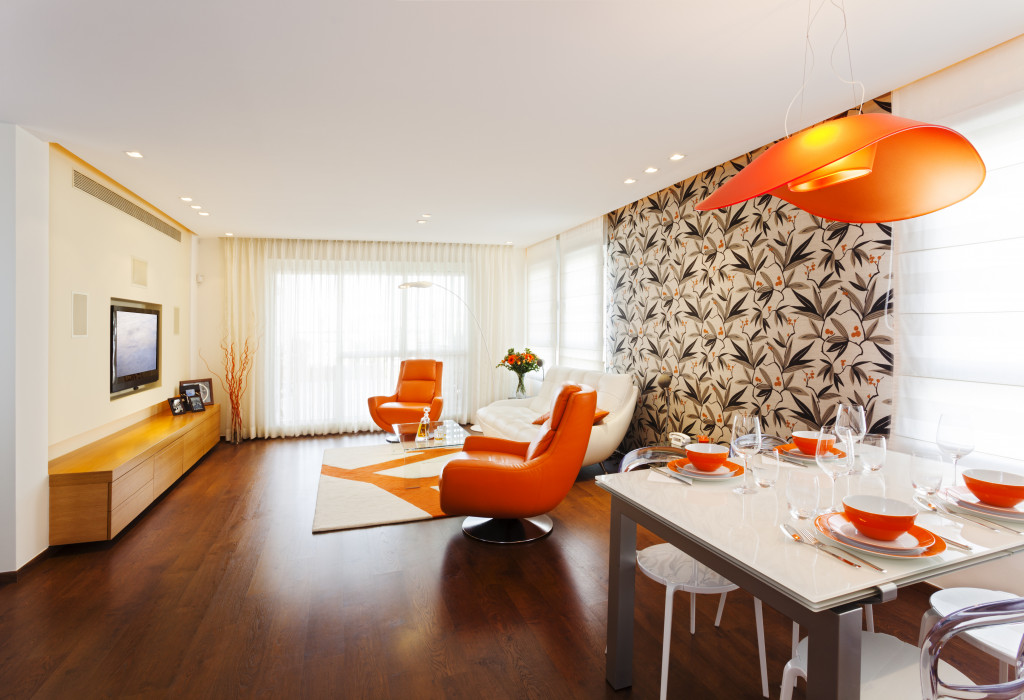If you have a room that’s strikingly beautiful but lacking in color, it can be hard to feel motivated. Color is the emotional ingredient that drives our responses to design and shapes how we experience space. In addition to being able to change your mood, colors can also affect productivity. For example, colors such as red, yellow, and orange create a sense of warmth and excitement. Green is associated with health and tranquility, while blue evokes feelings of calmness and serenity.
Since we’re wired to respond to color in such complex ways, it can be difficult to know how best to use it in your home or office. But when combined with good design choices, you can make the most of any color you want to help you feel comfortable in your chosen space.
1. Consider the color of your furniture and flooring
When you’re looking at paint samples or swatches of fabric, it may be difficult to know what the colors will look like in your living room. One way to approach this is by thinking about your furniture and flooring first. When you are sifting through flooring or furniture and decor stores, take a sample of your desired paint or fabric with you to create a color board that lets you experiment with different combinations.
2. Choose colors that allow the personality of your room to shine through
It’s also important to consider how you want people to feel when they are in your living space. For example, if you have young children, choosing colors that draw attention can be beneficial as it can help create fun spaces. On the other hand, if you live alone or are an introvert, jewel tones may be best avoided as they can make small rooms feel closed in.
3. Match wall colors to ceiling heights
Ceilings are often painted a lighter version of the walls so that they recede and create an open, airy atmosphere. Lighter colors have less pigment, resulting in a subtle look with little or no tone variation; this will make ceilings appear higher than those with dark walls.
4. Use the right color to balance your space
You may find that you need to make changes once you start choosing furniture and decor pieces for the room, which will leave you with a mismatched look if they don’t go with your chosen paint or fabric. By using your color board as a reference, you can eliminate this issue by matching the items you have to your color swatches.
5. Bring in a second color for a unique touch
A great way to add some pizzazz and warmth into a room is by placing a bolder accent somewhere within it—and what better place than on your walls? To complement the hue of your furniture, choose a second color that complements your original choice. Then, create an interesting focal point with artwork in this contrasting shade.
6. To make colors more vibrant, add texture

When you look at two shades side by side, it can be difficult to tell which one is actually brighter or lighter than the other. One way of making spaces look brighter is by adding texture to walls with features such as murals, wallpaper, or wall stenciling. Texture also makes colors appear more intense and rich.
7. Frame pieces with neutral colors like black, white, or brown for an elegant look
Using these colors to frame furniture or decor pieces will give them a sense of depth, which can make spaces appear larger. You could also use textured items, such as coasters and vases, instead of frames for similar effects.
8. Use contrast to create a focal point
Putting brighter or bolder elements against darker and more muted ones can work well in creating a focal point. For example, you might place statement wallpaper behind the living area’s seating to create an eye-catching contrast.
9. Pick tints of your favorite hues for smaller spaces
While strong hues can make large rooms look more cheerful and inviting, they will overwhelm small spaces. To make smaller rooms feel larger, you may want to use tints or pastel versions of your favorite hues.
10. Create coziness with muted colors
If you are looking for a more intimate space, choose less colorful options, such as soft browns and beiges, which will give the room a relaxed atmosphere. If you want to create a sense of warmth, you could also use warm colors like oranges and yellows.
11. Use natural light for brighter interiors
You will notice that colors can look different under natural lighting conditions than they do during the day or under artificial light at night. When planning your color scheme, you should always take time to view it under these different conditions so that you can get the best idea of how it would look in your chosen space.
Creating the perfect space for you is all about choosing colors that represent your personality and lifestyle. Whether it’s a more vibrant, colorful room with lots of life or a calming interior with muted tones, there are many ways to create an inviting atmosphere. These tips should help you get started on creating your own beautiful sanctuary!
